Life in America: The Reagan Years, A Webography
Other Works by Atwood: The Novels
The Edible Woman (1969)
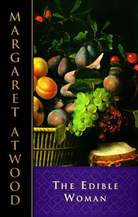
Ever since her engagement, the strangest thing has been happening to Marian McAlpin: she can't eat. First meat. Then eggs, vegetables, cake, pumpkin seeds--everything! Worse yet, she has the crazy feeling that she's being eaten. Marian ought to feel consumed with passion, but she really just feels...consumed. A brilliant and powerful work rich in irony and metaphor, The Edible Woman is an unforgettable masterpiece by a true master of contemporary literary fiction. BUY IT HERE
Surfacing (1972)

Part detective novel, part psychological thriller, Surfacing is the story of a talented woman artist who goes in search of her missing father on a remote island in northern Quebec. Setting out with her lover and another young couple, she soon finds herself captivated by the isolated setting, where a marriage begins to fall apart, violence and death lurk just beneath the surface, and sex becomes a catalyst for conflict and dangerous choices. Surfacing is a work permeated with an aura of suspense, complex with layered meanings, and written in brilliant, diamond-sharp prose. Here is a rich mine of ideas from an extraordinary writer about contemporary life and nature, families and marriage, and about women fragmented...and becoming whole. BUY IT HERE
Lady Oracle (1976)
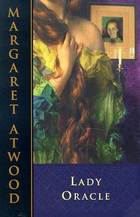
Joan Foster is the bored wife of a myopic ban-the-bomber. She takes off overnight as Canada's new superpoet, pens lurid gothics on the sly, attracts a blackmailing reporter, skids cheerfully in and out of menacing plots, hair-raising traps, and passionate trysts, and lands dead and well in Terremoto, Italy. In this remarkable, poetic, and magical novel, Margaret Atwood proves yet again why she is considered to be one of the most important and accomplished writers of our time. BUY IT HERE
Life Before Man (1979)
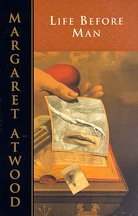
Imprisoned by walls of their own construction, here are three people, each in midlife, in midcrisis, forced to make choices--after the rules have changed. Elizabeth, with her controlled sensuality, her suppressed rage, is married to the wrong man. She has just lost her latest lover to suicide. Nate, her gentle, indecisive husband, is planning to leave her for Lesje, a perennial innocent who prefers dinosaurs to men. Hanging over them all is the ghost of Elizabeth's dead lover...and the dizzying threat of three lives careening inevitably toward the same climax. BUY IT HERE
Bodily Harm (1981)
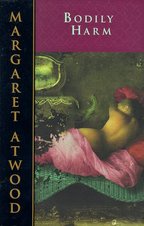
A powerfully and brilliantly crafted novel, Bodily Harm is the story of Rennie Wilford, a young journalist whose life has begun to shatter around the edges. Rennie flies to the Caribbean to recuperate, and on the tiny island of St. Antoine she is confronted by a world where her rules for survival no longer apply. By turns comic, satiric, relentless, and terrifying, Margaret Atwood's Bodily Harm is ultimately an exploration of the lust for power, both sexual and political, and the need for compassion that goes beyond what we ordinarily mean by love. BUY IT HERE
Cat's Eye (1988)**
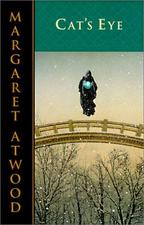
Herself the daughter of a Canadian forest entomologist, Atwood writes in an autobiographical vein about Elaine Risley, a middle-aged Canadian painter (and daughter of a forest entomologist) who is thrust into an extended reconsideration of her past while attending a retrospective show of her work in Toronto, a city she had fled years earlier in order to leave behind painful memories. Most pointedly, Risley reflects on the strangeness of her long relations with Cordelia, a childhood friend whose cruelties, dealt lavishly to Risley, helped hone her awareness of our inveterate appetite for destruction even while we love, and are understood as characteristically femininea betrayal of other women that masks a ferocious betrayal of oneself. Atwood's portrayal of the friendship gives the novel its fraught and mysterious center, but her critical assessment of Cordelia and the "whole world of girls and their doings" also takes the measure of a coercive, conformist society (not quite as extreme as in the futuristic The Handmaid's Tale ). Emerging "the stronger" for her latecoming understanding of herself, Risley in the final pages rises above the ties that bound her, transcendently alive to the possibilities of "light, shining out in the midst of nothing." BUY IT HERE
The Robber Bride (1993)
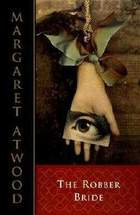
Petite Tony teaches the agressively male subject of military history and has a talent for speaking backwards; actually, she's Ynot. Charis eats only vegetarian fare and consults crystals. Boisterous, stylish Roz runs her own company and drives a BMW. These three women would seem to have little in common, but they're held together by a single thread: Zenia, a lying, charismatic femme fatale who at one time or other stole the men in their lives. But Zenia is dead, blown to bits in Beirut, and can hurt them no more. Or so they think until the day a still-seductive Zenia walks into the restaurant where they are having lunch. As in Cat's Eye ( LJ 2/1/89), Atwood takes feminism one step further, showing women as victims not only of society but of themselves. Her book is daring, richly detailed, and compulsively readable. Indeed, some readers might find it too readable; at times it feels a bit trashier than something you would expect from Atwood. In addition, while Zenia is a fascinating absence at the novel's center, she seems too bad to be true. Nevertheless, Atwood is always good reading. BUY IT HERE
Alias Grace (1996)**
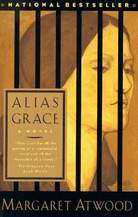
In 1843, a 16-year-old Canadian housemaid named Grace Marks was tried for the murder of her employer and his mistress. The sensationalistic trial made headlines throughout the world, and the jury delivered a guilty verdict. Yet opinion remained fiercely divided about Marks--was she a spurned woman who had taken out her rage on two innocent victims, or was she an unwilling victim herself, caught up in a crime she was too young to understand? Such doubts persuaded the judges to commute her sentence to life imprisonment, and Marks spent the next 30 years in an assortment of jails and asylums, where she was often exhibited as a star attraction. In Alias Grace, Margaret Atwood reconstructs Marks's story in fictional form. Her portraits of 19th-century prison and asylum life are chilling in their detail. The author also introduces Dr. Simon Jordan, who listens to the prisoner's tale with a mixture of sympathy and disbelief. In his effort to uncover the truth, Jordan uses the tools of the then rudimentary science of psychology. But the last word belongs to the book's narrator--Grace herself. BUY IT HERE
The Blind Assassin (2000)*
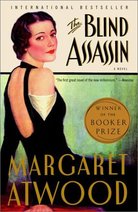
The Blind Assassin is a tale of two sisters, one of whom dies under ambiguous circumstances in the opening pages. The survivor, Iris Chase Griffen, initially seems a little cold-blooded about this death in the family. But as Margaret Atwood's most ambitious work unfolds--a tricky process, in fact, with several nested narratives and even an entire novel-within-a-novel--we're reminded of just how complicated the familial game of hide-and-seek can be:
What had she been thinking of as the car sailed off the bridge, then hung suspended in the afternoon sunlight, glinting like a dragonfly, for that one instant of held breath before the plummet? Of Alex, of Richard, of bad faith, of our father and his wreckage; of God, perhaps, and her fatal, triangular bargain.
Meanwhile, Atwood immediately launches into an excerpt from Laura Chase's novel, The Blind Assassin, posthumously published in 1947. In this double-decker concoction, a wealthy woman dabbles in blue-collar passion, even as her lover regales her with a series of science-fictional parables. Complicated? You bet. But the author puts all this variegation to good use, taking expert measure of our capacity for self-delusion and complicity, not to mention desolation. Almost everybody in her sprawling narrative manages to--or prefers to--overlook what's in plain sight. And memory isn't much of a salve either, as Iris points out: "Nothing is more difficult than to understand the dead, I've found; but nothing is more dangerous than to ignore them." Yet Atwood never succumbs to postmodern cynicism, or modish contempt for her characters. On the contrary, she's capable of great tenderness, and as we immerse ourselves in Iris's spliced-in memoir, it's clear that this buttoned-up socialite has been anything but blind to the chaos surrounding her. BUY IT HERE
What had she been thinking of as the car sailed off the bridge, then hung suspended in the afternoon sunlight, glinting like a dragonfly, for that one instant of held breath before the plummet? Of Alex, of Richard, of bad faith, of our father and his wreckage; of God, perhaps, and her fatal, triangular bargain.
Meanwhile, Atwood immediately launches into an excerpt from Laura Chase's novel, The Blind Assassin, posthumously published in 1947. In this double-decker concoction, a wealthy woman dabbles in blue-collar passion, even as her lover regales her with a series of science-fictional parables. Complicated? You bet. But the author puts all this variegation to good use, taking expert measure of our capacity for self-delusion and complicity, not to mention desolation. Almost everybody in her sprawling narrative manages to--or prefers to--overlook what's in plain sight. And memory isn't much of a salve either, as Iris points out: "Nothing is more difficult than to understand the dead, I've found; but nothing is more dangerous than to ignore them." Yet Atwood never succumbs to postmodern cynicism, or modish contempt for her characters. On the contrary, she's capable of great tenderness, and as we immerse ourselves in Iris's spliced-in memoir, it's clear that this buttoned-up socialite has been anything but blind to the chaos surrounding her. BUY IT HERE
Oryx and Crake (2003)**
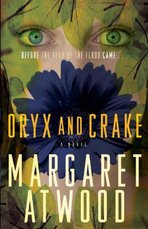
In Oryx and Crake, a science fiction novel that is more Swift than Heinlein, more cautionary tale than "fictional science" (no flying cars here), Margaret Atwood depicts a near-future world that turns from the merely horrible to the horrific, from a fool's paradise to a bio-wasteland. Snowman (a man once known as Jimmy) sleeps in a tree and just might be the only human left on our devastated planet. He is not entirely alone, however, as he considers himself the shepherd of a group of experimental, human-like creatures called the Children of Crake. As he scavenges and tends to his insect bites, Snowman recalls in flashbacks how the world fell apart. While the story begins with a rather ponderous set-up of what has become a clichéd landscape of the human endgame, littered with smashed computers and abandoned buildings, it takes on life when Snowman recalls his boyhood meeting with his best friend Crake: "Crake had a thing about him even then.... He generated awe ... in his dark laconic clothing." A dangerous genius, Crake is the book's most intriguing character. Crake and Jimmy live with all the other smart, rich people in the Compounds--gated company towns owned by biotech corporations. (Ordinary folks are kept outside the gates in the chaotic "pleeblands.") Meanwhile, beautiful Oryx, raised as a child prostitute in Southeast Asia, finds her way to the West and meets Crake and Jimmy, setting up an inevitable love triangle. Eventually Crake's experiments in bioengineering cause humanity's shockingly quick demise (with uncanny echoes of SARS, ebola, and mad cow disease), leaving Snowman to try to pick up the pieces. There are a few speed bumps along the way, including some clunky dialogue and heavy-handed symbols such as Snowman's broken watch, but once the bleak narrative gets moving, as Snowman sets out in search of the laboratory that seeded the world's destruction, it clips along at a good pace, with a healthy dose of wry humor. BUY IT HERE
The Penelopiad (2005)
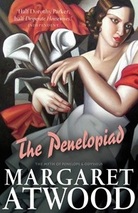
Drawing on a range of sources, in addition to The Odyssey, Atwood scripts the narrative of Penelope, the faithful and devoted wife of Odysseus and her 12 maids, who were killed upon the master's return. Atwood proposes striking interpretations of her characters that challenge the patriarchal nature of Greek mythology. The chapters transition between the firsthand account of Penelope and the chorus of maids as listeners are taken from Penelope's early life to her afterlife. Laural Merlington charmingly delivers the witty and perceptive Penelope with realistic inflection and emphasis. Some of her vocal caricatures seem over the top, but most voices maintain a resemblance to our perceptions of these mythic people. The maids are presented as a saddened chorus by a cloning of Merlington's voice. These dark figures speak straightforwardly in their accusations of Penelope and Odysseus, while, at other times, they make use of rhyming. This format works well, though sometimes the cadence and rhyming scheme are off beat. This benefits the production by creating an eerie resonance and haunting demeanor that enhances this engaging tale. BUY IT HERE
The Year of the Flood (2009)
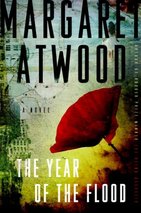
The times and species have been changing at a rapid rate, and the social compact is wearing as thin as environmental stability. Adam One, the kindly leader of the God's Gardeners--a religion devoted to the melding of science and religion, as well as the preservation of all plant and animal life--has long predicted a natural disaster that will alter Earth as we know it. Now it has occurred, obliterating most human life. Two women have survived: Ren, a young trapeze dancer locked inside the high-end sex club Scales and Tails, and Toby, a God's Gardener barricaded inside a luxurious spa where many of the treatments are edible. Have others survived? Ren's bioartist friend Amanda? Zeb, her eco-fighter stepfather? Her onetime lover, Jimmy? Or the murderous Painballers, survivors of the mutual-elimination Painball prison? Not to mention the shadowy, corrupt policing force of the ruling powers. Meanwhile, gene-spliced life forms are proliferating: the lion/lamb blends, the Mo'hair sheep with human hair, the pigs with human brain tissue. As Adam One and his intrepid hemp-clad band make their way through this strange new world, Ren and Toby will have to decide on their next move. They can't stay locked away. By turns dark, tender, violent, thoughtful, and uneasily hilarious, The Year of the Flood is Atwood at her most brilliant and inventive. BUY IT HERE
*Indicates that the novel won the prestigious Booker Prize.
**Indicates that the novel was a finalist for the prestigious Booker Prize.
**Indicates that the novel was a finalist for the prestigious Booker Prize.
